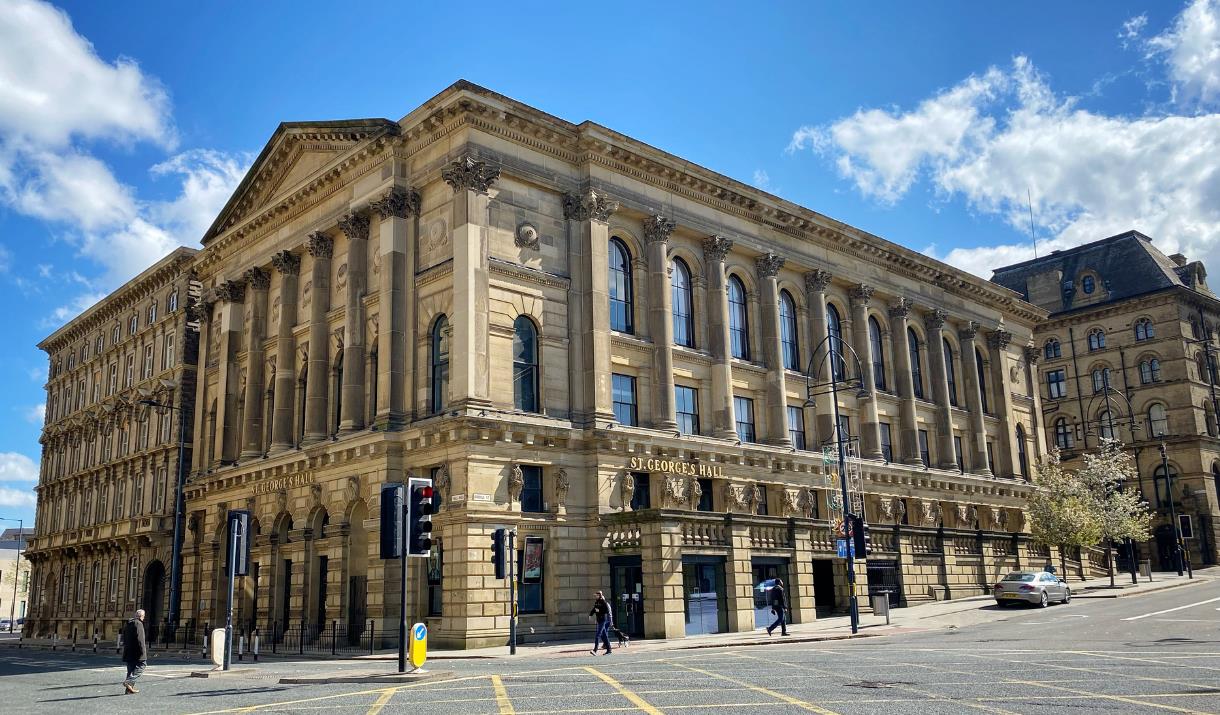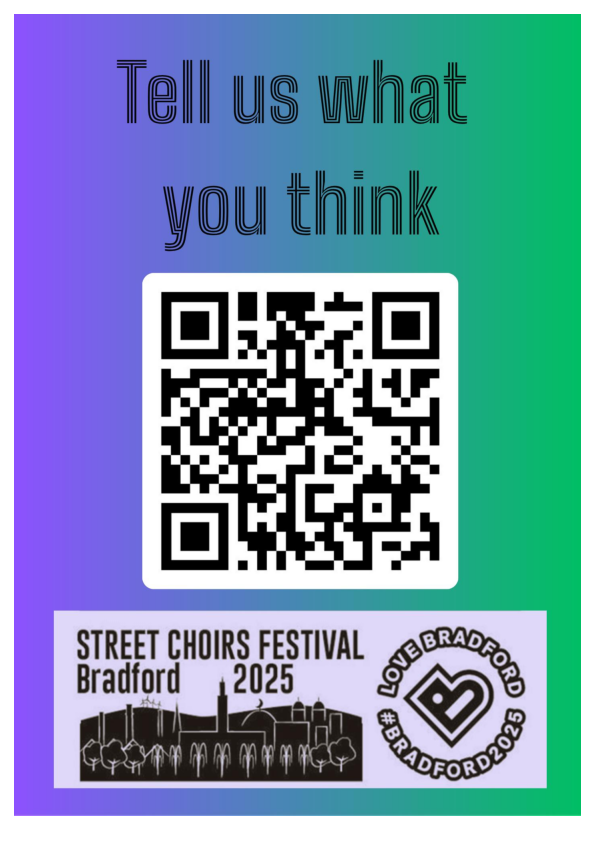A People’s Palace
A place where the communities of Bradford can gather to be inspired by the world’s best music and entertainment.

St George’s Hall, in the heart of the city, opened in 1853 and was the first grand public building in Bradford. Since then many world famous musicians and bands have performed on stage; it has become home to the Hallé Orchestra; provided a platform for many notable speakers, including Prime Ministers, protestors and political trailblazers; and in among its many incarnations has been a courtroom, a cinema and even an airport lobby!
St George’s Hall closed its doors in 2016 for major work to restore it to its former glory and make it fit for the future. The refurbishment was made possible with funding from Bradford Council and the National Lottery Heritage Fund and brings the treasured venue back to the heart of the community.
St George’s Hall through the ages…
St. George’s Hall has reflected social change from its opening in 1853 to the present day. Some significant moments include:
1854
Charles Dickens reads his famous story A Christmas Carol to a packed auditorium. The money raised going to an educational institute in Bradford. The press describes the audience as ‘riveted from first to last… as was manifest by their frequent cheers and their loud laughter!’
1870
Bradford MP W E Forster explains his Primary Education Act, meaning that from the age of 5, it is now law that children should attend school, laying out the framework for our school system used to this day. Strong disapproval and scuffles with the police follow.
1873

One of the earliest and most famous African American vocal groups the Jubilee Singers performed in St. Georges Hall. The group were made up of mainly freed slaves from Fisk University in Nashville. ‘The Fisk Jubilee Singers’ changed the spiritual into an art form and introduced it to the world.
1891

The Lister’s Mill strikers hold a meeting and thousands attend
This event spills over into disturbances. The Riot Act is read on the Town Hall steps and the Durham Light Infantry called.
1907
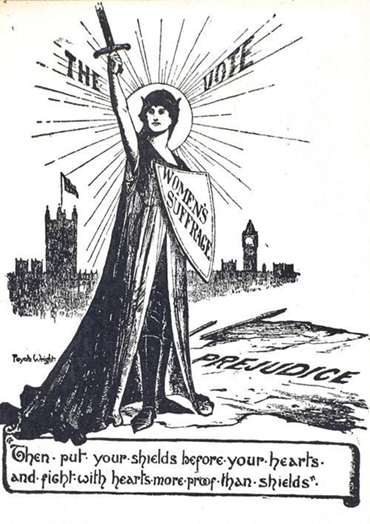
Suffragette leader Emmeline Pankhurst speaks at St George’s Hall
Suffragette leader Emmeline Pankhurst of the Women’s Social and Political Union is heckled as she speaks at a meeting in support of votes for women.
1910
Prime Minister Asquith speaks at St George’s Hall, and two suffragettes, who have been hiding under the stage for 24 hours, interrupt him with a demand for ‘justice for women and freedom.’ They are escorted from the Hall.
1914
The Independent Labour Party (ILP), later to become the Labour Party, was founded in Bradford in 1893. Many of their meetings, including this one celebrating the 21st birthday of the ILP with Labour leader Keir Hardie, are held at St George’s Hall.
1959
In the 1950s blues artists, jazz orchestras and big bands perform. A young Shirley Bassey sings Kiss Me Honey with the Eric Winstone Orchestra and is described in the programme as ‘a charming person of fantastic talent.’
1964
The Rolling Stones perform two shows.
Formed in 1962 this was the band’s second British tour. Playing covers, their hard-driven sound came to represent the youthful rebellious counter-culture of the day.
1965
Big Mama Thornton, influential African American blues singer/songwriter performs alongside some of the greatest blues artists in the world at the American Folk Blues Festival.
1973
Rock legends perform at St George’s Hall
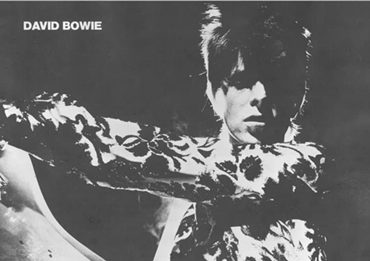
Heavy rock band Led Zeppelin performs, as does legendary artist David Bowie as Ziggy Stardust with The Spiders from Mars.
A golden age of rock and pop at the venue.
1980
Punk band The Clash rocks the venue as heavy metal gives way to punk, new wave, ska, reggae, bhangra, rap and pop at St George’s Hall. The Clash went on to play here for a third time in 1985.
1985
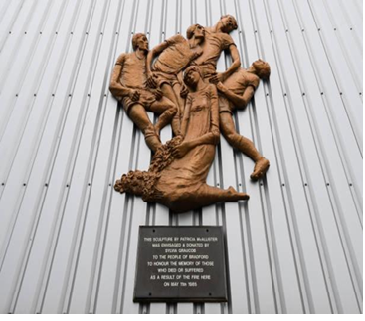
Following the tragedy of the fire at Valley Parade football ground in Bradford, three nights of benefit concerts are given to raise money for the victims. Kiki Dee, The Cult and Smokie perform.
1986
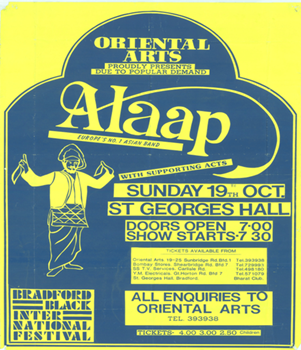
Along with other hugely popular British bhangra bands such as Heera and The Sahotas, Alaap performs British bhangra which combines roots in the Punjab with Western, rock-influenced beats; a music which affirms the identity of young British Asian audiences in Bradford.
1988
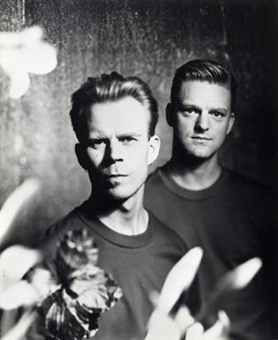
A great number of LGBT+ artists and performers have appeared at the venue over the years.
In this era performers begin openly celebrating their sexual orientation through performances on stage. Erasure is hugely popular with LGBT+ audiences, for whom the openly gay singer Andy Bell is an icon.
1999
Thousands of people pack St George’s Hall to hear politician and former prime minister of Pakistan Benazir Bhutto speak.
2008
Pop and rock bands like the Sugababes, James and Ash perform. Soloists Dionne Warwick, Boy George and Hayley Westerna pack out the venue.
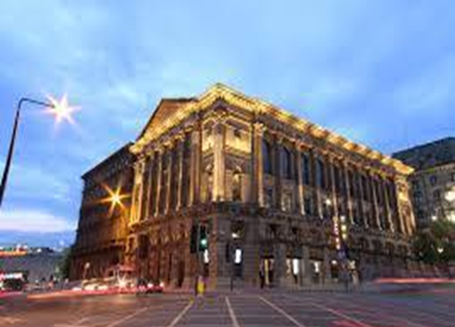
2020
The venue is later used as a Covid testing hub. Members of the public without obvious symptoms of Covid can walk in and have a test, with results delivered in 30 minutes. Part of the strategy to fight the pandemic on a local level.
2021 to the present day
After first opening in 1853 and having survived two world wars, change of ownership and a global pandemic, St George’s Hall continues as its founder intended, to provide for our “instruction, amusement and entertainment”, and to reflect the spirit of the day.
Information sourced from:

